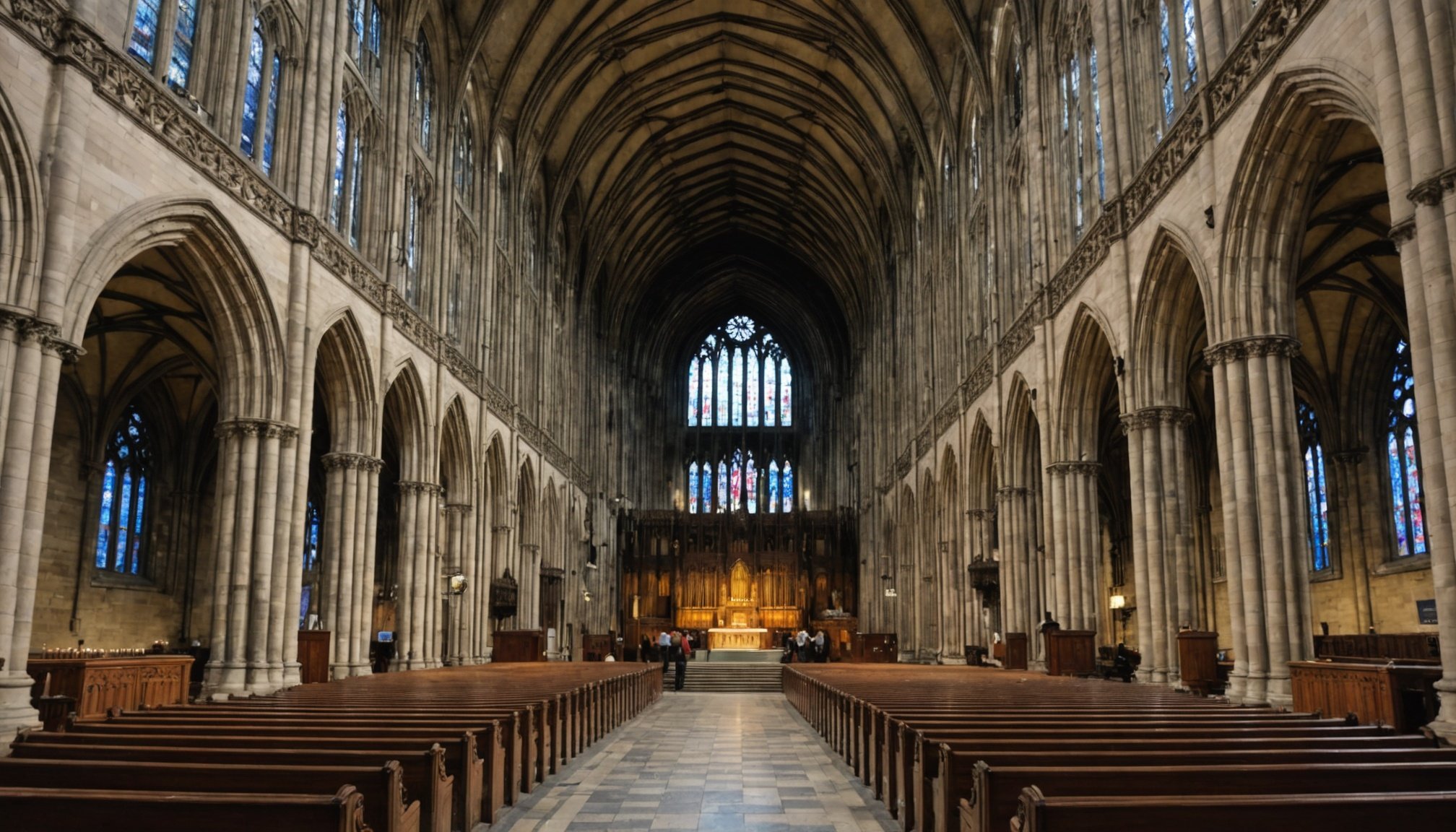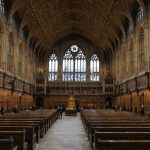Liverpool, the vibrant city on the eastern side of the Mersey Estuary, is renowned globally for its exquisite architectural beauty. Its buildings, streets, and houses, some dating back to the 19th century, tell tales of the city’s rich history and culture. However, as splendid as these sceneries might be, they are but the tip of the iceberg, the icing on an architecturally-rich cake. The crowning glories of these architectural marvels are undoubtedly Liverpool’s cathedrals.
Liverpool is home to two cathedrals, each unique in design and allure. They stand as testaments of the city’s ingenuity and commitment to architectural beauty. This article will guide you on how to experience these architectural wonders on a budget.
Exploring Liverpool Cathedral
Upon entering Liverpool, one cannot help but notice the Liverpool Cathedral, which stands majestically on St. James’s Mount. This building is the largest cathedral in Britain and the fifth largest in the world. The cathedral was designed by Giles Gilbert Scott, whose artistry and skill are evident in every stone and stained-glass window.
For those of you who appreciate Gothic revival architecture, you will find the cathedral’s exterior, with its intricate designs and towering spires, a sight to behold. Interestingly, this magnificent structure was built over a span of 74 years, from 1904 to 1978. It is an exemplar of how architecture evolved across the 20th century.
Inside, you can marvel at the high arching ceilings, the grand organ said to be one of the largest in the U.K, and the beautifully designed Lady Chapel. All of these can be enjoyed at a minimal cost. The cathedral operates on donations, therefore, it is up to you how much you want to contribute.
Discovering Liverpool Metropolitan Cathedral
On Hope Street, a short stroll from the Liverpool Cathedral, stands the Liverpool Metropolitan Cathedral, also known as the Metropolitan Cathedral of Christ the King. Unlike its Anglican counterpart, this Roman Catholic edifice exudes a more modern aesthetic.
The cathedral was built between 1962 and 1967, following the design of Frederick Gibberd after the original plans by Sir Edwin Lutyens were deemed too ambitious and expensive. The result is a unique circular design, quite different from traditional cathedral architecture.
The Lutyens Crypt, located beneath the cathedral, is one of the few elements of Lutyens’ original design that was built. This crypt, with its fascinating history, is a must-visit. Fortunately, the entrance fee is quite affordable, and for an additional minimal cost, you can opt for a guided tour that offers further insight into the crypt’s history and architecture.
The Harmony of Two Cathedrals
The two cathedrals, though different in style, share a harmonious relationship, standing at opposite ends of Hope Street and connected by the aptly named Hope Street Quarter. This lane is a beautiful fusion of the old and new, lined with Georgian townhouses, modern apartments, boutiques, arts venues, and restaurants.
The short walk between the two cathedrals is a delightful journey through Liverpool’s architectural history that you can enjoy free of charge. Along the way, you will encounter the Rodney Street Conservation Area, also known as the "Harley Street of the North", famous for its grand Georgian townhouses.
The Surroundings of the Cathedrals
To fully experience the architectural beauty of Liverpool’s cathedrals, don’t restrict yourselves to the buildings alone. The city’s streets, public squares, and docks are equally enchanting.
Near the Liverpool Cathedral, you’ll find St. James’s Gardens, a historic cemetery turned public park. It’s a peaceful retreat with a natural setting that contrasts the urban environment. Here, you can relax and soak in the sight of the cathedral from a distance.
Not far from the Metropolitan Cathedral is Liverpool’s Georgian Quarter. This area is known for its well-preserved Georgian buildings, including the Philharmonic Dining Rooms, a Grade II* listed pub designed by Walter W. Thomas.
Architectural Tours on a Budget
Taking an architectural tour can be a great way to learn more about Liverpool’s cathedrals and other architectural gems. These tours, often guided by knowledgeable locals, provide in-depth information about the history and design of the city’s iconic buildings.
While some tours can be expensive, there are budget-friendly options available. Free walking tours are offered by several organizations, and these usually include both cathedrals in their itinerary. Alternatively, you can download free self-guided tour apps on your smartphone. Not only do these offer flexibility, but they also allow you to explore at your own pace.
Remember, the beauty of architecture lies not merely in observing, but in understanding the story each building tells – a story of the city, its people, and its historical journey. Liverpool, with its architectural beauty and rich history, offers plenty of stories, just waiting to be discovered.
Liverpool’s Historic Streets and Grade Listed Buildings
Liverpool’s architectural charm isn’t limited to its cathedrals. The city streets and grade listed buildings add another layer of beauty to the architectural landscape.
Take a stroll down Dale Street, one of the oldest streets in Liverpool. Lined with Georgian and Victorian buildings, you will find the Municipal Buildings, a Grade II* listed building designed by John Foster. The street also hosts the Town Hall, a magnificent example of Georgian architecture.
Just off Dale Street, you will find William Brown Street, often referred to as the city’s ‘Cultural Quarter’. The street is home to several Grade I and Grade II listed buildings, including St. George’s Hall, Walker Art Gallery and the Central Library. Designed by Harvey Lonsdale Elmes, St. George’s Hall is a prime example of neo-classical architecture with its Corinthian columns and extensive use of Portland stone.
Within central Liverpool, you will come across Hope Street, connecting the two cathedrals. The street is renowned for its cultural and architectural richness, including the Philharmonic Dining Rooms, a Grade II* listed pub. On this street, you will also find the unique blend of the old and the new in the form of the contemporary Everyman Theatre standing alongside the traditional Georgian houses.
Liverpool’s architectural beauty extends to the waterfront with the Royal Albert Dock. Designed by Jesse Hartley and Philip Hardwick, it was the first structure in Britain to be built entirely of cast iron, brick, and stone, with no structural wood. It now hosts a range of bars, restaurants and cultural venues including Tate Liverpool.
Parks and Suburbs: The Green Side of Liverpool’s Architecture
While the city center is teeming with architectural marvels, Liverpool’s suburbs and parks offer a serene contrast.
In the south of the city, you will find Sefton Park, a Grade I listed park designed by Edouard Andre and Lewis Hornblower. The park’s 235 acres are a mixture of landscaped gardens, natural woodland, and beautiful bodies of water. The park’s centerpiece, the Palm House, is a Victorian glasshouse that hosts various plant species from around the world.
Another architectural gem in the suburbs is the affluent area of Edge Hill. This area is home to several Grade II listed buildings, including Wavertree Botanic Gardens and Park. The garden’s curator’s lodge was designed by John Foster and is an excellent example of Greek revival architecture.
Liverpool, the city that sits on the eastern side of the Mersey Estuary, offers more than just football and The Beatles. The city is an architectural dream, brimming with historic buildings, stunning cathedrals, and picturesque parks. With a little planning and a keen eye for beauty, you can experience the architectural wonders of Liverpool without breaking the bank.
Whether you’re marveling at Gilbert Scott’s Gothic masterpiece, the Liverpool Cathedral, or appreciating the modern aesthetic of the Metropolitan Cathedral of Christ the King, exploring the rich architectural history of Hope Street, or strolling through the serene landscapes of Sefton Park, Liverpool has something for every architecture enthusiast.
So, next time you’re in Liverpool, remember to look beyond the surface. Take the time to understand the stories these architectural treasures tell. They are narratives of the city’s history, its people, and their resilience. In Liverpool, you’ll find that every street, every building, and every park has a tale to tell. You just need to be willing to listen.










